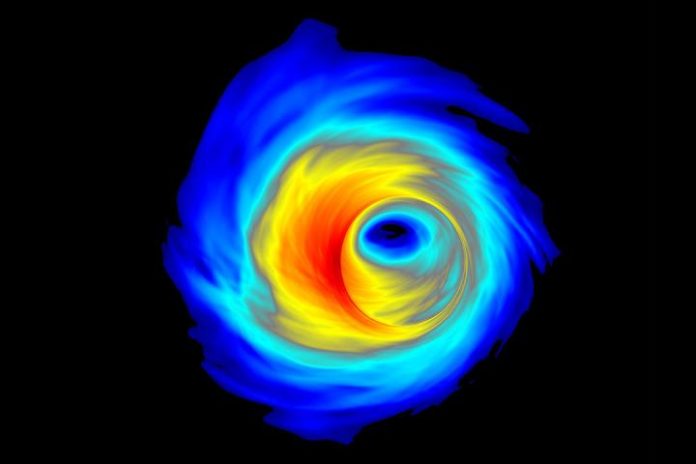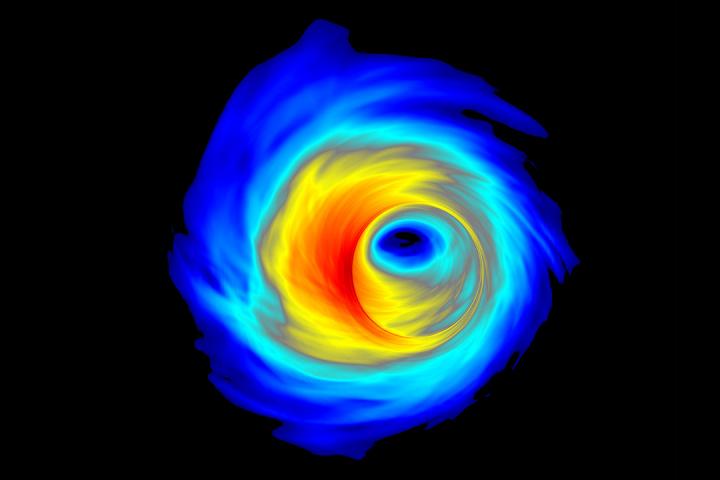
While scientists may have detected and reported the emitting of gravitational waves from a total of 10 black hole mergers to date, they’re still trying to explain the origin of these events. The largest merger recorded to date has a bigger mass and higher spin than scientists ever imagined possible.
To try and better understand how this merger could have occurred simulations have been created by a group of researchers and their findings published in Physical Review Letters. Results from the study suggest that these mergers take place within close proximity of supermassive black holes. In this region, called the accretion disk, lies gas, dust, stars, and black holes.
This latest research suggests that as these black holes move around the accretion disk, they collide with one other, creating a black hole merger. As this merger continues to circle around the accretion disk it devours smaller black holes, adding to its size in what one of the researchers on the study, Assistant Professor at the Rochester Institute of Technology Richard O’Shaughnessy, describes as “Pac-Man-like” behavior.

“This is a very tantalizing prospect for those of us who work in this field,” said O’Shaughnessy. “It offers a natural way to explain high mass, high spin binary black holes mergers and to produce binaries in parts of parameter space that the other models cannot populate. There is no way to get certain types of black holes out of these other formation channels.”
As researchers continue to search for gravitational waves, O’Shaughnessy and his colleagues are hoping to find further clues that will confirm their models. If their theory is proved correct it may help us better understand the assembly of galaxies on a whole.
